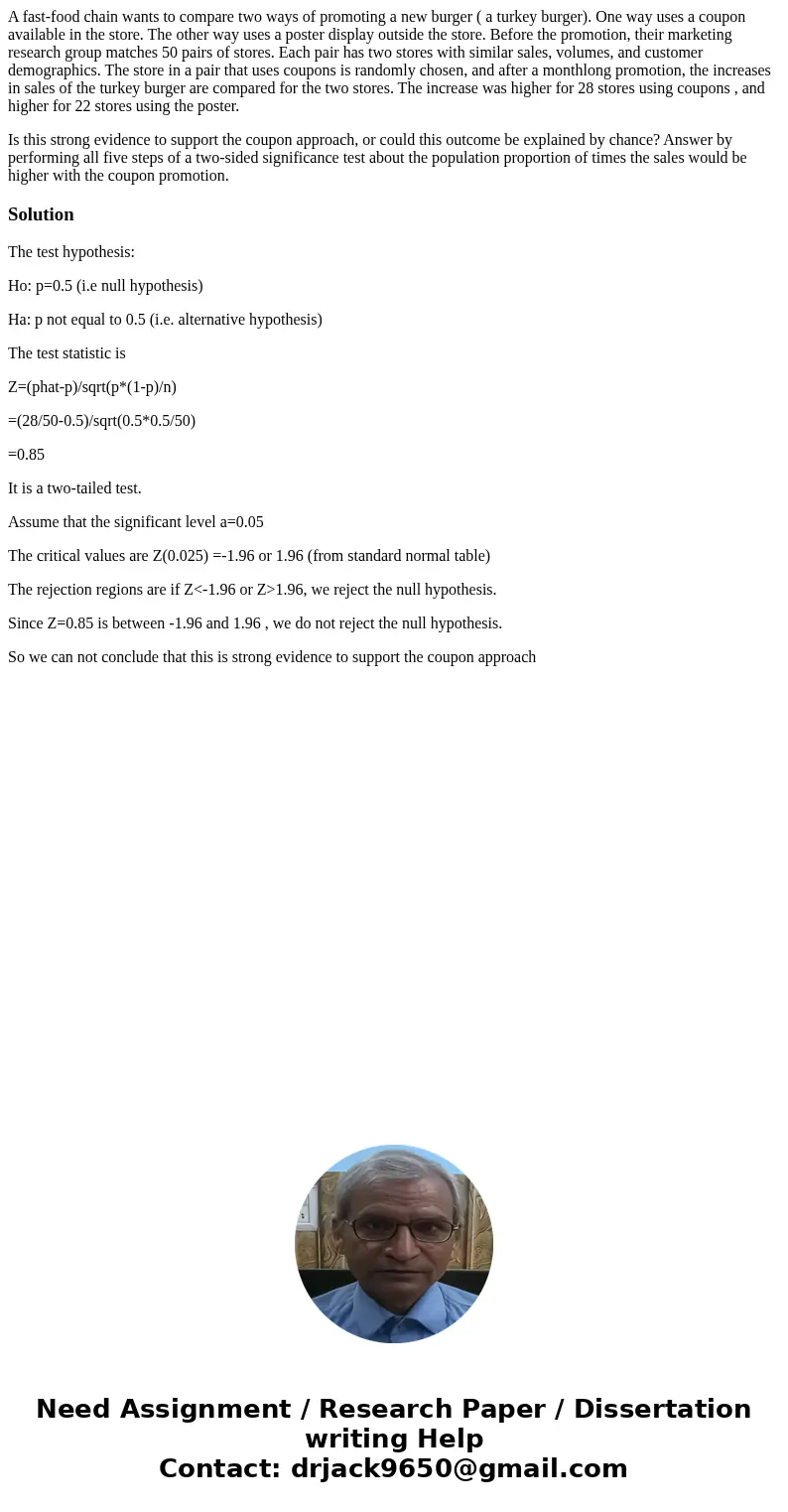A fastfood chain wants to compare two ways of promoting a ne
A fast-food chain wants to compare two ways of promoting a new burger ( a turkey burger). One way uses a coupon available in the store. The other way uses a poster display outside the store. Before the promotion, their marketing research group matches 50 pairs of stores. Each pair has two stores with similar sales, volumes, and customer demographics. The store in a pair that uses coupons is randomly chosen, and after a monthlong promotion, the increases in sales of the turkey burger are compared for the two stores. The increase was higher for 28 stores using coupons , and higher for 22 stores using the poster.
Is this strong evidence to support the coupon approach, or could this outcome be explained by chance? Answer by performing all five steps of a two-sided significance test about the population proportion of times the sales would be higher with the coupon promotion.
Solution
The test hypothesis:
Ho: p=0.5 (i.e null hypothesis)
Ha: p not equal to 0.5 (i.e. alternative hypothesis)
The test statistic is
Z=(phat-p)/sqrt(p*(1-p)/n)
=(28/50-0.5)/sqrt(0.5*0.5/50)
=0.85
It is a two-tailed test.
Assume that the significant level a=0.05
The critical values are Z(0.025) =-1.96 or 1.96 (from standard normal table)
The rejection regions are if Z<-1.96 or Z>1.96, we reject the null hypothesis.
Since Z=0.85 is between -1.96 and 1.96 , we do not reject the null hypothesis.
So we can not conclude that this is strong evidence to support the coupon approach

 Homework Sourse
Homework Sourse